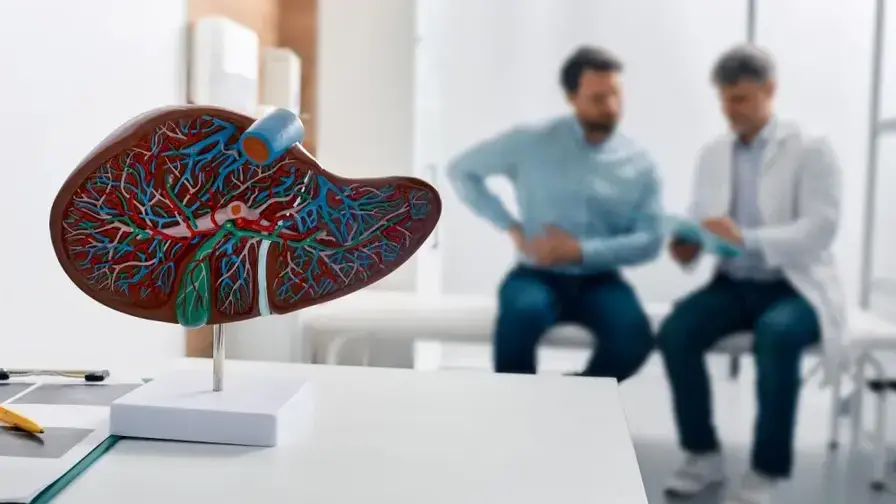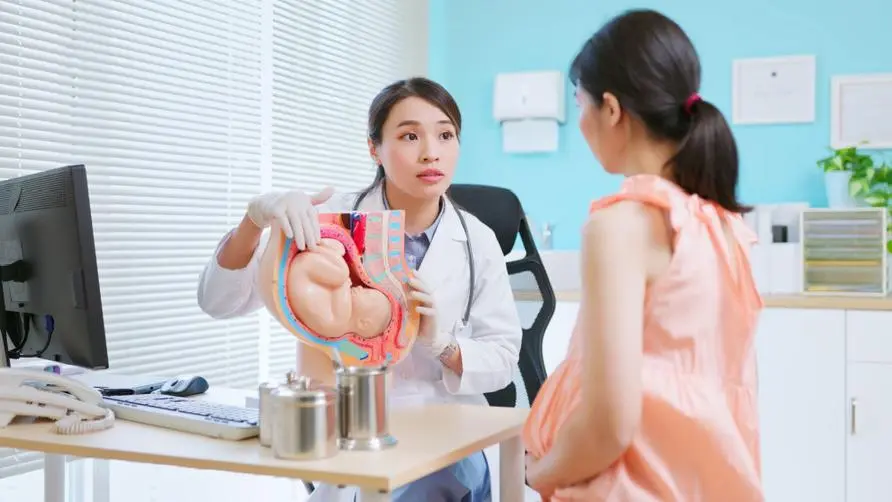Help patients with polycystic ovary have a good pregnancy dream! Doctor: With the blessing of "two-stage in vitro fertilization", it is expected to increase the live birth rate

Women suffering from polycystic ovary syndrome (PCOS), if treated in time, still have a chance to become pregnant and realize their dream of having a baby? Huang Jueqi, deputy director of Huang Jianrong Department of Obstetrics and Gynecology and Taipei IVF Center, said in an interview that reproductive medicine technology is advancing with each passing day. Patients with polycystic cysts can discuss with their doctors intervention through in vitro fertilization, which is expected to grasp the golden period of pregnancy as soon as possible and complete the birth plan.
Research confirms: 2 drugs combined with treatment increase the chance of pregnancy in polycystic patients
Vice President Huang Jueqi first took the ovulation injection treatment as an example: In the past ovulation stimulation treatment, patients needed to inject drugs every day. The pain of injections could easily affect the quality of life, thereby reducing treatment compliance. The advent of “long-acting ovulation injection” has the characteristics of a long half-life and can maintain the effect for 5-7 days. Patients do not need to inject every day, greatly reducing the number of injections, and also significantly relieving patients’ pain and psychological pressure.
In addition, Vice President Huang Jueqi once published a paper in the well-known medical journal “Scientific Reports”, pointing out that using oral progesterone instead of gonadotropin-releasing antagonist (GnRH Antagonist), combined with long-acting ovulation injection interventional treatment, not only helps reduce There is a risk of ovarian hyperstimulation (OHSS), and the average number of eggs retrieved from the subjects is 20.7. It is relatively suitable for women with polycystic ovarian problems who want to try to conceive through IVF.
Two-stage in vitro fertilization combined with oral ovulation medicine: expected to increase the live birth rate
For polycystic ovary patients who are prone to become “ovarian high responders” (eggs > 15), “whole embryo freezing” can also be helpful in increasing the pregnancy rate. Vice President Huang Jueqi pointed out that in order to avoid implanting the embryo into the hormonally abnormal endometrial environment, the whole embryo is frozen without implantation until the next menstrual cycle. The embryo will be thawed and implanted into the uterus after the next menstrual cycle. This course of treatment It is the “two-stage test tube baby” technology.
Vice President Huang Jueqi pointed out that two-stage in vitro fertilization combined with the latest research on oral ovulation drugs and natural cycle implantation method is expected to significantly reduce the pre-implantation medication and reduce the complications of hypertension in the middle and late stages of pregnancy. A previous study compared IVF treatment in 1508 PCOS patients. The experimental results showed that the live birth rate of two-stage IVF treatment was 49.3%, which was significantly higher than the 42.0% of fresh embryo implantation, and the miscarriage rate was significantly lower (22 % vs 32.7%).
Good news for patients with polycystic ovary! The fourth generation of test-tube babies helps improve pregnancy
Patients with polycystic ovary usually have a higher number of follicles, so selecting the best quality embryos for implantation is the key to a successful IVF treatment. “To this end, we have introduced the fourth generation of IVF technology, in which “embryo time-lapse photography” can continuously observe the growth of embryos through monitoring equipment, and combines it with the most popular AI analysis to score the health of the embryos and further optimize the embryos selection process.
Vice President Huang Jueqi said that this technology is particularly important for polycystic patients with a large number of follicles. It can more accurately select the embryos with the most potential for implantation, thereby increasing the success rate of a single embryo implantation.
In addition, Vice President Huang Jueqi also suggested that patients with polycystic ovary can discuss with their attending physician whether to undergo preimplantation chromosomal screening (PGT-A), which can help accurately select chromosomally normal embryos for implantation and improve embryo implantation. The bed rate and pregnancy rate are improved, and the risk of miscarriage is significantly reduced; specifically, the success rate of a single implantation can be increased to 60-70%.
After countless injections and medication, she was “almost desperate”. She had polycystic cysts and was old and still managed to conceive.
Is it possible for women who are over the age of pregnancy (under 34 years old) and have polycystic ovary problems to still conceive? Vice President Huang Jueqi cited a 35-year-old female polycystic patient in the clinic as an example: The patient experienced two failed attempts at artificial insemination in other hospitals. During the period, she took countless medications and injections, and the pain caused by the implantation made her almost unsure of conceiving. Plans lose confidence. However, after making an appointment with Vice President Huang Jueqi over the phone, the patient received a quick answer and applied for a government subsidy the next day to start treatment immediately.
“This patient’s treatment process only took 3 months and 8 days, from consultation to embryo implantation to successful pregnancy test. She received the good news of pregnancy 10 days after implantation!” Vice President Huang Jueqi said, Patients with polycystic ovary, even those with advanced maternal age and those with polycystic ovary, still have a chance to successfully achieve their dream of having children with the correct treatment strategy.
Finally, Vice President Huang Jueqi emphasized that in addition to receiving early treatment, polycystic patients must also pay attention to daily life management, such as diet control, regular exercise, weight loss and adequate sleep, to improve ovulation and insulin resistance; in addition, polycystic patients during pregnancy must Regular prenatal check-ups and adequate nutritional supplements such as progesterone and multivitamins for pregnant women should be carried out to ensure a smooth pregnancy. After pregnancy, you should pay attention to blood sugar and blood pressure control to reduce the risk of pregnancy complications.
Further reading:





